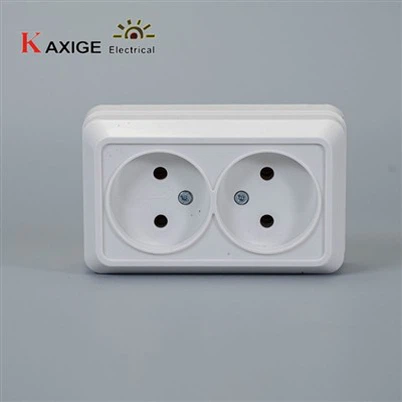What is the power consumption of a lamp dimmer control switch?
Leave a message
Hey there! As a supplier of lamp dimmer control switches, I often get asked about the power consumption of these nifty little devices. So, I thought I'd take a moment to break it down for you in a way that's easy to understand.
First things first, let's talk about what a lamp dimmer control switch actually does. In simple terms, it allows you to adjust the brightness of your lights. Whether you're looking to create a cozy atmosphere for a romantic dinner or need some extra light for reading, a dimmer switch gives you the flexibility to customize your lighting to suit your needs.
Now, onto the big question: what's the power consumption of a lamp dimmer control switch? Well, the answer isn't as straightforward as you might think. There are a few factors that can affect how much power a dimmer switch uses, including the type of switch, the load it's controlling, and how it's being used.
Types of Dimmer Switches
There are two main types of dimmer switches: resistive dimmers and electronic dimmers.


-
Resistive Dimmers: These are the older, more traditional type of dimmer switches. They work by using a variable resistor to control the amount of power flowing to the light bulb. When you turn the dimmer down, the resistor increases in resistance, which reduces the amount of current flowing through the bulb and makes it dimmer. However, resistive dimmers are not very energy - efficient because they dissipate a significant amount of energy as heat. In fact, the power consumption of a resistive dimmer can be quite high, especially when the dimmer is set to a low brightness level.
-
Electronic Dimmers: These are the more modern and efficient type of dimmer switches. They use solid - state electronics to control the power flow to the light bulb. Instead of dissipating energy as heat, electronic dimmers use pulse - width modulation (PWM) or phase - control techniques to adjust the voltage and current supplied to the bulb. This makes them much more energy - efficient than resistive dimmers, with lower power consumption overall.
Load and Power Consumption
The load, or the type and number of light bulbs connected to the dimmer switch, also plays a big role in power consumption.
-
Incandescent Bulbs: Incandescent bulbs are the most common type of bulbs used with dimmer switches. They work by heating a filament inside the bulb until it glows. Incandescent bulbs are relatively easy to dim, and the power consumption of a dimmer switch controlling them is generally proportional to the brightness level. When the dimmer is set to full brightness, the switch consumes very little power itself, as most of the power is going to the bulb. However, as you dim the lights, the power consumption of the dimmer switch may increase slightly, but it's still relatively low compared to other factors.
-
LED Bulbs: LED bulbs are becoming increasingly popular due to their energy efficiency and long lifespan. However, not all LED bulbs are compatible with dimmer switches. The ones that are often require a special type of dimmer switch designed for LEDs. LED bulbs consume much less power than incandescent bulbs, and the power consumption of the dimmer switch controlling them is also very low. In fact, in most cases, the power consumption of the dimmer switch is negligible compared to the savings you get from using LED bulbs.
How Dimmer Switches are Used
The way you use the dimmer switch can also affect its power consumption. If you leave the dimmer switch on all the time, even at a low brightness level, it will consume a small amount of power continuously. However, if you turn the dimmer off when the lights aren't needed, you can save a significant amount of energy over time.
Let's take a look at some rough estimates of power consumption. A typical electronic dimmer switch controlling an incandescent bulb might consume around 1 - 3 watts when the switch is on, but not controlling a bulb (in standby mode). When controlling a bulb, the power consumption of the dimmer itself is usually less than 1 watt when the bulb is at full brightness and may increase slightly as you dim the bulb, but generally stays well below 5 watts.
For LED bulbs, the power consumption of the dimmer switch is even lower. It can be as low as 0.1 - 0.5 watts in standby mode and close to zero when controlling an LED bulb, as LED bulbs draw very little current.
Now, I'd like to introduce some of our high - quality products. We offer a wide range of lamp dimmer control switches, along with other great products like the 73B 2 Gang Switch, the 73B Switch and Socket Combination, and the 73B 1 Gang Socket 2P. These products are designed with energy efficiency in mind and are built to last.
If you're in the market for lamp dimmer control switches or any of our other products, I encourage you to reach out to us for a purchase negotiation. We're always happy to discuss your needs and provide you with the best solutions at competitive prices.
In conclusion, the power consumption of a lamp dimmer control switch depends on several factors, but in general, electronic dimmers are more energy - efficient than resistive dimmers, and using them with LED bulbs can lead to significant energy savings. So, if you're looking to upgrade your lighting system and save on energy costs, consider investing in a high - quality lamp dimmer control switch from us.
References
- "Understanding Dimmer Switches" - Electrical Safety Foundation International
- "Energy - Efficient Lighting" - U.S. Department of Energy






